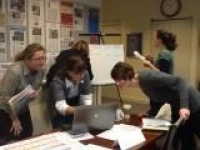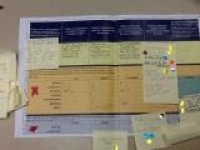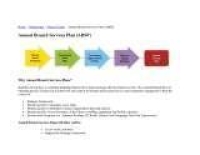Community-Focused Annual Branch Services Plans
Pierce County Library System, Wash.
Innovation Synopsis
Utilizing the PCLS strategic framework, branch staff conducted library internal asset mapping and community asset mapping, participated in market segmentation exercises, and reviewed operations statistics to create customer focused, community minded branch service plans supportive of the Library’s strategic framework and system initiatives.
Challenge/Opportunity
Branch libraries did not have a consistent planning framework to make decisions driving branch services. The Annual Branch Service planning process provided the framework and context for branch staff to plan services, programs and community engagement that integrated evidence-based decision making. Through a series of meetings and workshops, the Director and Customer Experience Team engaged branch staff in community asset mapping and marketing segmentation exercises designed to deepen staff understanding of their communities beyond simple demographic and library usage information to include lifestyle and life mode marketing segmentation as well community information demonstrating each area’s unique capacities, conditions and community concerns. A primary goal of the process was to encourage staff to see outside their library walls and beyond the customers they routinely serve in their libraries and established outreach activities. A second goal was for staff to use evidence-based evaluation to analyze established services and outreach strategies and consider the effectiveness of their current array of offerings in serving their residents both within the framework and responding to the marketing segments in their community. The process included all branch staff providing a common understanding of community and service priorities. Key department staff was invited to participate in workshops and evaluating the plans. The process will be done on an annual basis and include ongoing evaluation.
Key Elements of Innovation
Staff understanding and integrating their understanding of the strategic framework, the information they gained through Community asset mapping and market segmentation work were critical for staff to create plans that were actionable, measurable and responsive to their communities while supporting the library’s strategic focus and outcomes. The five step process provided staff the opportunity to assimilate and apply learning as they worked through each step, building the capacity to create plans that integrated the different elements. The opportunity to apply the strategic framework as staff worked through different exercises provided an operational understanding of the framework and reinforced the importance of each staff member’s role in making the words real to customers through service. The community asset mapping and market segmentation workshops and assignments were critical to providing the context for staff to create branch plans. The windshield tours conducted by all staff provided them with the opportunity to purposefully explore the different segments of their communities while learning together about the unique capacities and conditions within their service areas. This process, repeated annually, will build staff capacity over time, deepening understanding of community and the ability of the library to deliver services valued by customers.
Achieved Outcomes
All 18 branches successfully completed the planning process and delivered annual branch services plans that demonstrated understanding of the strategic framework, integrated learning from the community asset mapping and market segmentation work and created measurable service initiatives. Staff participation and engagement throughout the process was high. Branch staff worked collaboratively throughout the process, sharing what they learned to create plans together. Site supervisors, adult and youth services librarians worked as teams to lead aspects of the process, especially in the evaluation of existing services and programs and development of new ideas. A project page was created on the Library’s intranet and shared drive providing shared access to tools, statistics and information gained through the process for all staff to access. Of the 74 people who participated in the market segmentation workshops, 38 completed a voluntary evaluation. 72% stated they learned things about their communities that made them consider how the library might provide different types of services or deliver services differently. 100% said what they learned in the workshop would help them in their work and 100% said they would be able to talk to other staff not in the workshop about market segmentation. These workshops lead to the integration of the use of market segmentation as a planning tool at a branch level.



